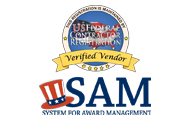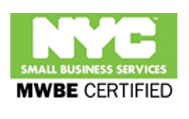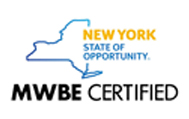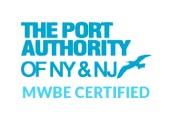
SAP vs. Oracle ERP: Why SAP Stands Out as the Superior Choice
In the world of enterprise resource planning (ERP) systems, two giants dominate the landscape: SAP and Oracle. Both offer robust solutions to streamline business processes, integrate data, and drive efficiency. However, when it comes to choosing the ERP system that best aligns with a company’s long-term goals, SAP consistently emerges as the stronger contender. Having spent years working with businesses navigating ERP implementations, I’ve seen firsthand how these systems impact operations, scalability, and user satisfaction. In this blog, I’ll dive into a detailed comparison of SAP and Oracle ERP, highlighting why SAP’s comprehensive features, flexibility, and innovation make it the better choice for most organizations.
Understanding ERP Systems
Before we jump into the comparison, let’s set the stage. ERP systems are the backbone of modern enterprises, integrating core business functions like finance, human resources, supply chain, and manufacturing into a unified platform. They eliminate data silos, improve decision-making, and enable businesses to adapt to changing market demands. SAP and Oracle have been at the forefront of this space for decades, each offering a suite of tools tailored to different industries and business sizes. But as we’ll explore, SAP’s approach gives it a distinct edge.
The SAP Advantage: Comprehensive and Future-Ready
SAP has long been synonymous with ERP excellence, and for good reason. Its flagship product, SAP S/4HANA, is built on the in-memory HANA database, which delivers lightning-fast processing speeds and real-time analytics. This is a game-changer for businesses that need to make quick, data-driven decisions. I recall working with a manufacturing client who switched to SAP S/4HANA and saw their reporting times drop from hours to seconds, allowing them to respond to supply chain disruptions almost instantly.
Oracle’s ERP Cloud, while also robust, relies on a different architecture. Its Fusion Cloud ERP is built on a modular framework, which can be appealing for businesses looking for a lighter, cloud-native solution. However, Oracle’s system often feels like a collection of disparate modules stitched together, which can lead to integration challenges. SAP, on the other hand, offers a more cohesive platform where modules like finance, procurement, and logistics work seamlessly together. This integrated approach reduces the risk of data inconsistencies and ensures smoother workflows.
Scalability and Flexibility
One of SAP’s standout strengths is its scalability. Whether you’re a mid-sized company or a global conglomerate, SAP can grow with you. Its modular design allows businesses to start with core functionalities and add modules as needed, without disrupting existing processes. I’ve seen this firsthand with a retail client who began with SAP’s financials module and later expanded to include supply chain and customer relationship management, all within the same ecosystem. This flexibility is particularly valuable for businesses in dynamic industries like retail or manufacturing, where needs evolve rapidly.
Oracle ERP Cloud is also scalable, but it often requires more customization to achieve the same level of flexibility. This can lead to higher implementation costs and longer timelines. A colleague once shared a story about an Oracle implementation that took nearly two years due to the need for extensive custom coding to align the system with the company’s unique processes. SAP, by contrast, offers a wealth of preconfigured industry-specific templates, which streamline deployment and reduce the need for heavy customization.
User Experience and Adoption
A common misconception is that SAP is clunky and hard to use. While older versions like ECC had a steeper learning curve, SAP S/4HANA’s Fiori user interface is a revelation. It’s intuitive, mobile-friendly, and designed with the end user in mind. Employees can access dashboards, run reports, and manage tasks from their smartphones, which boosts productivity and engagement. I worked with a logistics firm where employees initially resisted the transition to SAP, but once they saw how Fiori simplified their daily tasks, adoption rates soared.
Oracle’s user interface is modern and clean, no doubt, but it lacks the same level of personalization and role-based customization that SAP Fiori offers. Oracle’s UI can feel generic, requiring users to navigate through multiple screens to complete simple tasks. This can frustrate employees, especially those who aren’t tech-savvy. SAP’s focus on user experience extends to its training and support resources, which are extensive and tailored to different user roles, making onboarding smoother.
Innovation and Cloud Capabilities
In today’s fast-paced business environment, staying ahead means embracing innovation. SAP has invested heavily in emerging technologies like artificial intelligence, machine learning, and the Internet of Things (IoT). Its Business Technology Platform (BTP) integrates these technologies into the ERP system, enabling predictive analytics, automated workflows, and real-time insights. For example, a client in the energy sector used SAP’s AI-driven forecasting tools to optimize inventory, reducing costs by 15% in the first year.
Oracle also incorporates AI and machine learning, but its offerings feel less mature. Oracle’s AI tools are often add-ons rather than deeply integrated into the core ERP system, which can create a disjointed experience. Additionally, SAP’s cloud strategy is more comprehensive. With RISE with SAP, businesses get a managed cloud solution that includes hosting, maintenance, and continuous updates, all bundled into a single contract. This simplifies IT management and ensures businesses stay current with the latest features. Oracle’s cloud ERP, while flexible, often requires separate agreements for hosting and support, which can complicate budgeting and planning.
Industry-Specific Solutions
Another area where SAP shines is its industry-specific solutions. SAP has developed tailored ERP configurations for over 25 industries, from automotive to pharmaceuticals. These solutions come with prebuilt processes and best practices, reducing implementation time and ensuring alignment with industry standards. For instance, a healthcare client I worked with leveraged SAP’s industry-specific templates to comply with stringent regulatory requirements, saving months of configuration work.
Oracle offers industry solutions too, but they’re often less comprehensive. Many Oracle clients end up relying on third-party consultants to bridge the gap between the ERP system and their industry’s unique needs. This not only increases costs but also introduces risks related to system stability and support.
Cost and ROI
Cost is always a critical factor in ERP decisions. Oracle often markets its ERP Cloud as a more affordable option, particularly for smaller businesses. However, the total cost of ownership (TCO) can escalate quickly due to customization, integration, and ongoing support needs. SAP, while perceived as more expensive upfront, often delivers a better return on investment (ROI) thanks to its streamlined implementation and lower maintenance costs. A study I came across recently showed that SAP customers reported a 20% higher ROI on average compared to Oracle users, largely due to SAP’s efficiency and scalability.
Community and Support
SAP’s global community is another feather in its cap. With millions of users, thousands of partners, and a vast network of consultants, SAP offers unparalleled support. The SAP Community Network is a treasure trove of resources, from forums and blogs to webinars and tutorials. I’ve lost count of the times I’ve turned to the community to troubleshoot a client’s issue or find a creative workaround. Oracle’s community, while active, is smaller and less vibrant, which can make it harder to find timely solutions.
The Verdict: SAP Leads the Way
After years of working with both SAP and Oracle ERP systems, one can confidently say that SAP is the better choice for most businesses. Its combination of cutting-edge technology, scalability, user-friendly design, and industry-specific solutions makes it a powerhouse in the ERP world. While Oracle has its strengths, particularly for companies prioritizing a lightweight cloud solution, it often falls short in terms of integration, flexibility, and long-term value.
Choosing an ERP system is a monumental decision, one that can shape a company’s future for decades. SAP’s ability to evolve with your business, deliver real-time insights, and support a wide range of industries makes it the clear winner. If you’re considering an ERP implementation or upgrade, I’d urge you to take a close look at SAP S/4HANA and RISE with SAP. They’re not just tools—they’re strategic assets that can propel your business to new heights.
Post a comment Cancel reply
Related Posts
Embracing DevOps: A Strategic Imperative for Modern Organizations
In today’s hyper-competitive digital era, speed, quality, and agility are no longer optional—they're essential. To…
The Silent Custodian: How Java Manage Memory with Garbage Collection
In the world of software development, developers juggle logic, user experience, and performance. One of…
The Art of UX Design: Principles, Practices & Future Trends That Shape Digital Experiences
In today’s digital-first world, User Experience (UX) design is more than just a buzzword -…
Passkeys: The Future of Passwordless Authentication
The days of memorizing complex passwords may soon be behind us. With the growing need…

















